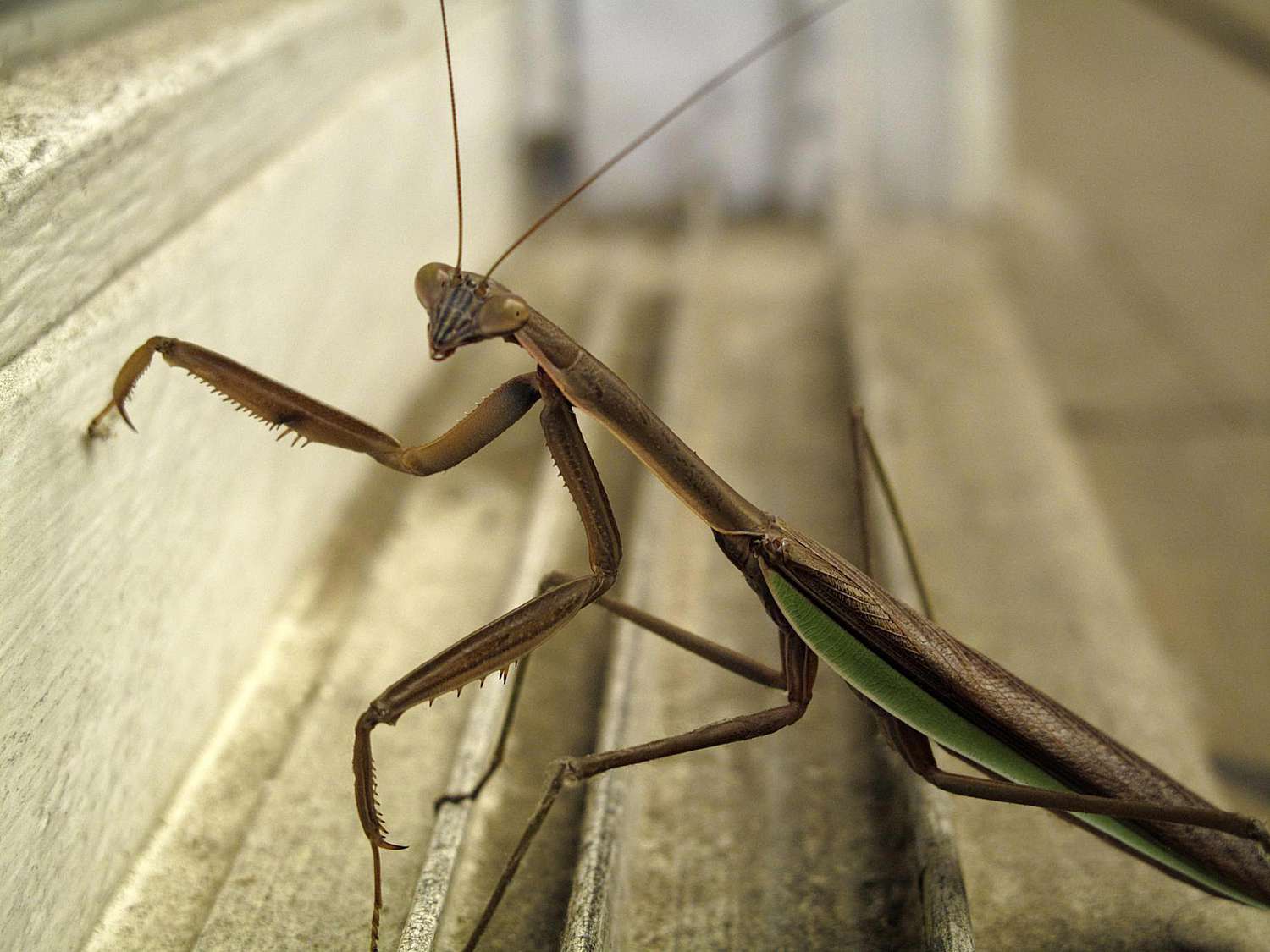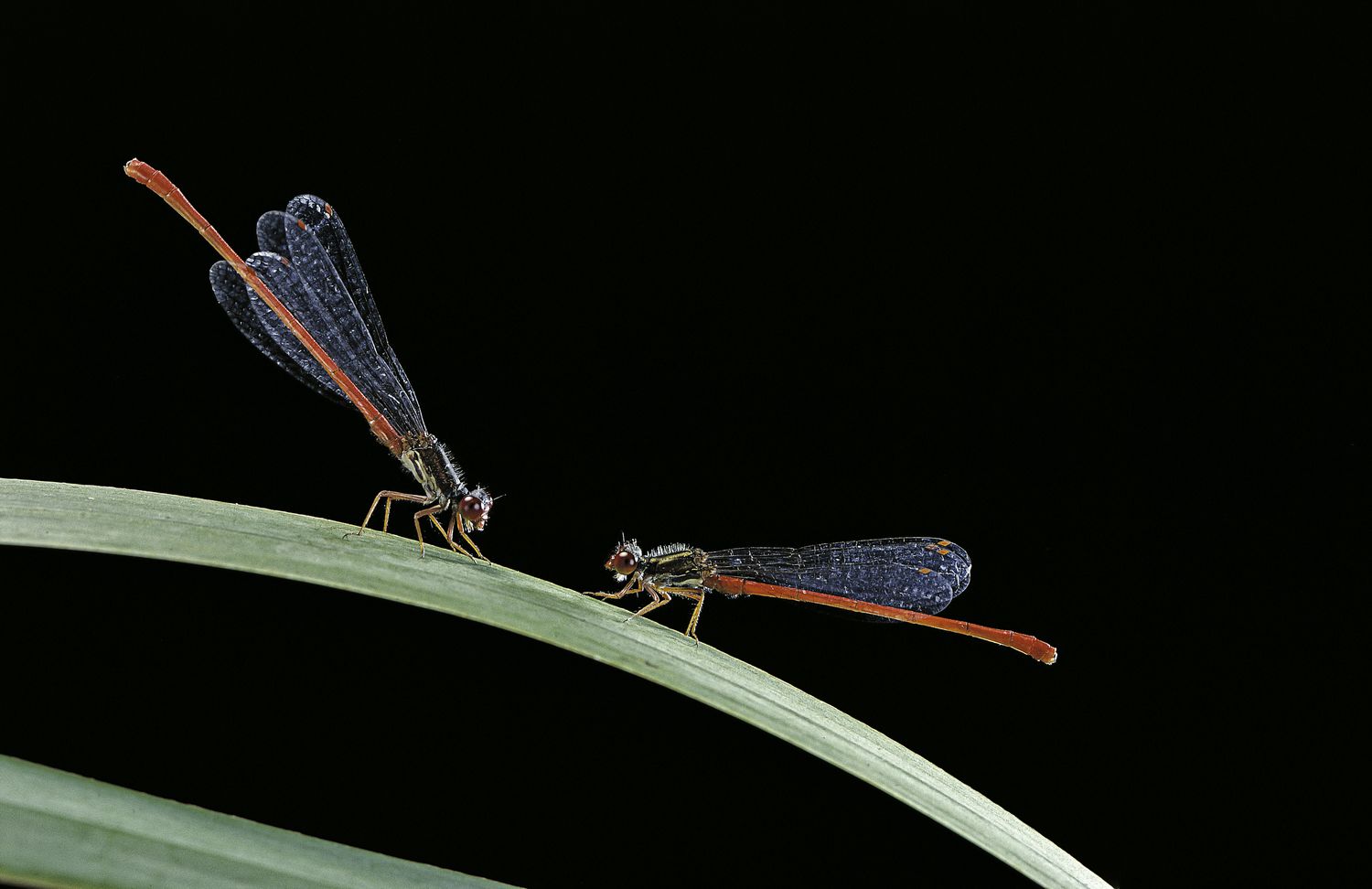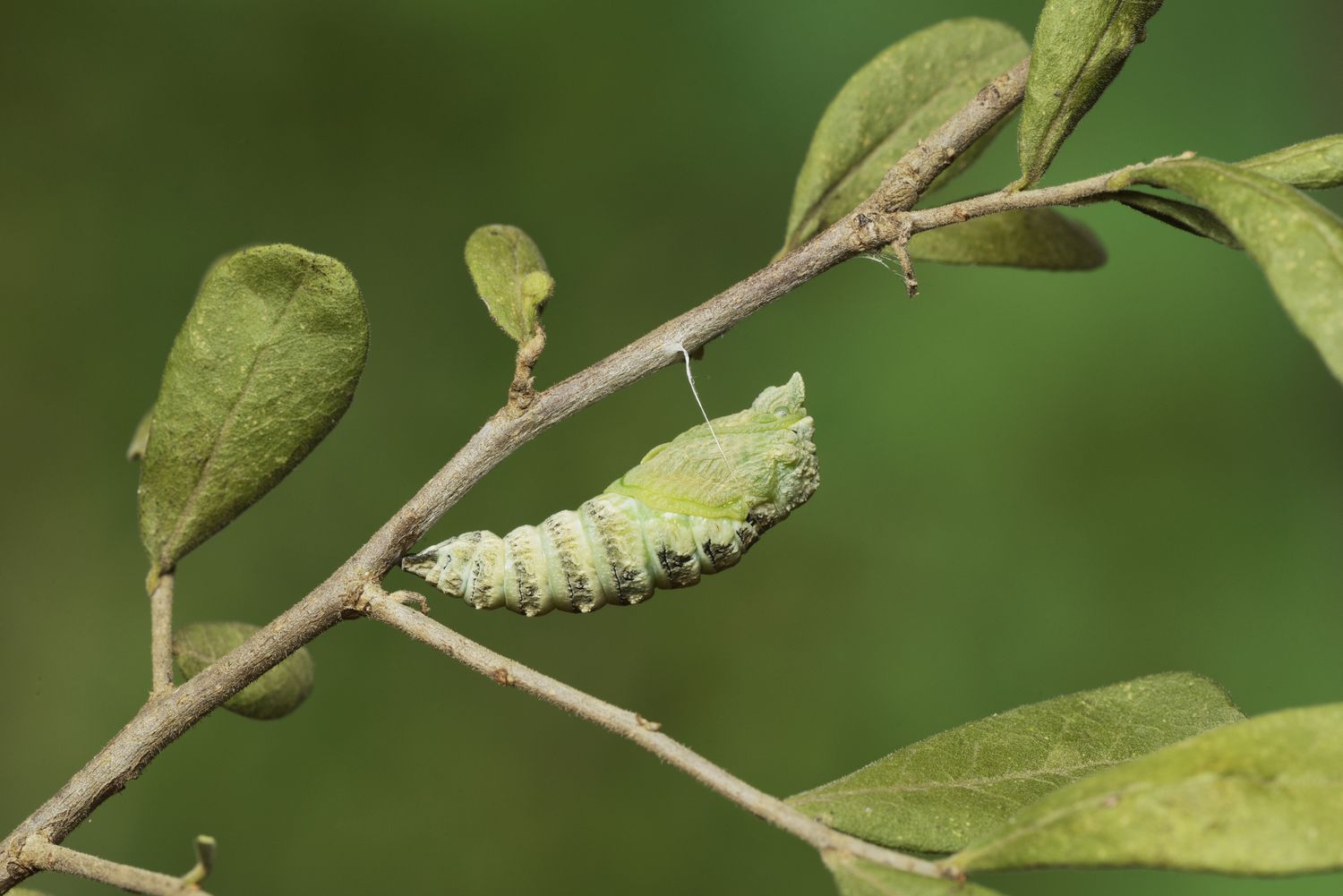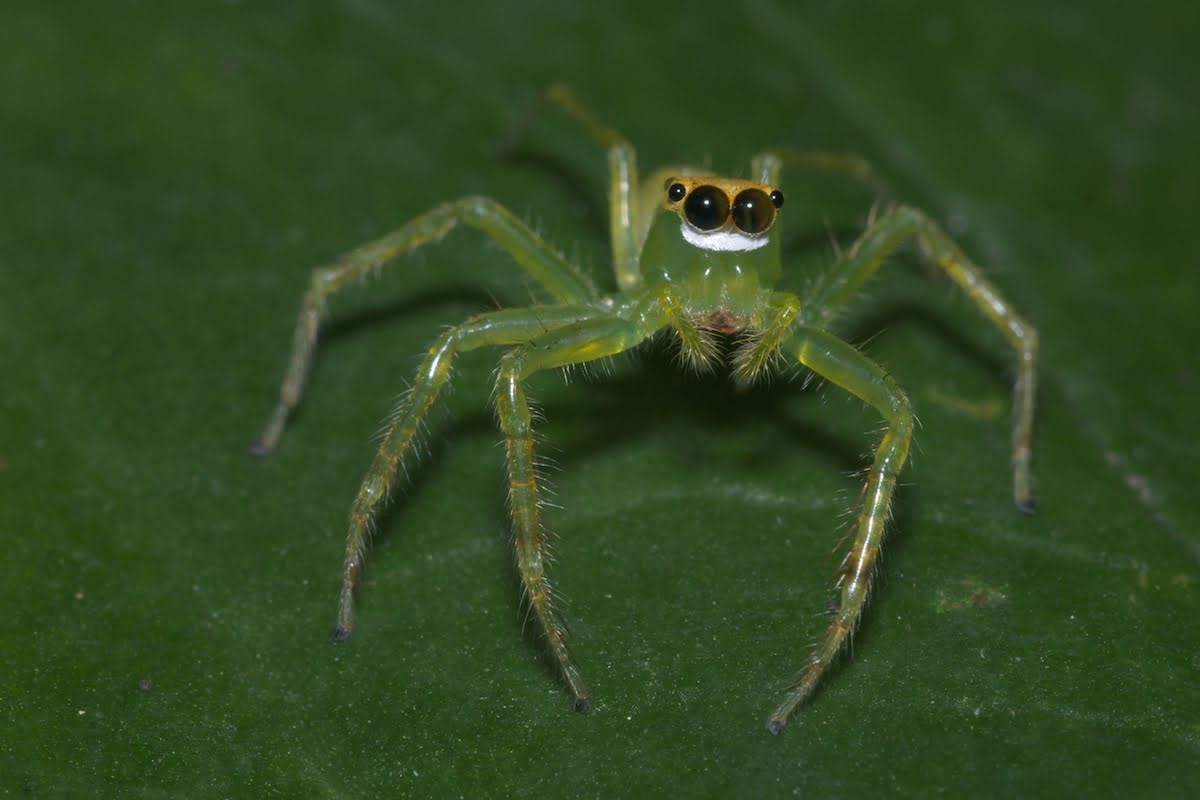Home>Gardening News and Trends>Latest News>Insects Are A Part Of Which Phylum


Latest News
Insects Are A Part Of Which Phylum
Modified: January 22, 2024
Discover the latest news on the diverse world of insects, from the fascinating features of their anatomy to insights into the phylum they belong to. Explore the intricate web of insect life and its significance in our ecosystem.
(Many of the links in this article redirect to a specific reviewed product. Your purchase of these products through affiliate links helps to generate commission for Chicagolandgardening.com, at no extra cost. Learn more)
Table of Contents
Introduction
Insects are a fascinating and diverse group of creatures that play a vital role in our ecosystems. They belong to the phylum Arthropoda, which is one of the largest and most diverse phyla in the animal kingdom. With over a million identified species, insects make up the majority of animal life on Earth. From tiny beetles to colorful butterflies, these creatures have captured our imagination throughout history and continue to amaze us with their remarkable adaptations and behaviors.
The phylum Arthropoda is characterized by its members having segmented bodies, exoskeletons, jointed legs, and a well-developed nervous system. Insects, along with other arthropods such as spiders and crustaceans, make up a significant portion of this phylum. However, insects stand out due to their unique features and evolutionary success.
With their incredible diversity, insects inhabit nearly every corner of our planet, from the depths of the oceans to the highest mountain peaks. They have adapted to various habitats and lifestyles, making them versatile and resilient organisms. Insects play essential roles in ecosystems as decomposers, pollinators, pest controllers, and food sources for other animals.
Throughout history, humans have interacted with insects in various ways. We have utilized their resources, studied their behaviors, and even incorporated them into our culture and art. However, with the rapid changes in our environment and human activities, insects face numerous challenges, such as habitat destruction, pollution, and climate change.
In this article, we will explore the fascinating world of insects, their classification within the phylum Arthropoda, their unique characteristics, the incredible diversity within their ranks, and their significance in ecosystems. We will also delve into the ways in which humans interact with insects and the importance of conserving these valuable creatures for the health and balance of our planet.
Definition of Phylum
Phylum is a taxonomic rank in the biological classification system that groups organisms based on their shared characteristics. It is one of the highest levels of classification, above classes and below kingdoms. The classification system helps us organize and understand the vast diversity of life on Earth.
The phylum is a fundamental category in this system, and it represents a major branch of the tree of life. It signifies a distinct body plan or set of features that sets a group of organisms apart from others. Each phylum is defined by a unique combination of structural, developmental, and genetic characteristics.
Within the animal kingdom, the phylum Arthropoda encompasses a diverse range of organisms, including insects, crustaceans, arachnids, and more. Arthropods are characterized by their jointed appendages, segmented bodies, and exoskeletons made of chitin. They are the most abundant and successful group of animals on Earth, with over a million described species.
Insects, as a subgroup of the phylum Arthropoda, have specific anatomical and physiological features that distinguish them from other arthropods. These features include a three-part body composed of a head, thorax, and abdomen, a pair of antennae, six legs, and often one or two pairs of wings.
The classification of insects within the phylum Arthropoda is based on shared characteristics and evolutionary relationships. They are further grouped into classes, orders, families, genera, and species. Each level of classification represents a progressively more specific grouping based on common traits and genetic relationships.
Understanding the phylum and its subdivisions helps scientists and researchers identify and classify species, study evolutionary relationships, and better comprehend the diversity of life on Earth. It provides a framework for studying the relationships between organisms and their environments, as well as for conservation efforts to protect and preserve our natural heritage.
Classification of Insects within Phylum
The classification of insects within the phylum Arthropoda is a complex and intricate system that aims to organize and categorize these fascinating creatures. Insects are classified based on shared characteristics, such as their body structure, developmental patterns, and genetic relationships. The hierarchical classification system consists of several levels, including class, order, family, genus, and species.
The class Insecta, often referred to as insects, is one of the largest and most diverse classes within the animal kingdom. It encompasses a vast number of species, with over a million identified and many more yet to be discovered. Insects are characterized by their six legs, three-part body composed of a head, thorax, and abdomen, and often one or two pairs of wings.
Within the class Insecta, insects are further classified into several orders. Some of the most well-known orders include:
- Coleoptera: This order includes beetles, which are the largest group of insects. They have a hard outer shell called elytra that protects their wings.
- Lepidoptera: This order consists of butterflies and moths. They have large, colorful wings covered in scales.
- Hymenoptera: This order includes bees, wasps, and ants. They are known for their complex social structures and important ecological roles.
- Diptera: This order comprises flies and mosquitoes. They have a single pair of wings and have adapted to various habitats and feeding behaviors.
- Orthoptera: This order includes grasshoppers, crickets, and locusts. They are known for their strong hind legs, which allow them to jump and produce distinctive sounds.
These are just a few examples of the numerous orders within the class Insecta. Each order is characterized by unique features, behaviors, and adaptations that have allowed insects to thrive in a wide range of environments.
Within the orders, insects are further classified into families, genera, and species. The classification becomes increasingly specific as we move down the hierarchy. Scientists use various techniques, including genetic analysis and morphological observations, to determine the evolutionary relationships between different species and groups.
The classification of insects helps us understand their diversity, evolutionary history, and ecological roles. It provides a framework for scientists, researchers, and enthusiasts to study, identify, and appreciate these incredible creatures and their vital contributions to our ecosystems.
Characteristics of Insects
Insects, as a diverse group within the phylum Arthropoda, exhibit a wide range of unique characteristics that have contributed to their overwhelming success and dominance in ecosystems around the world. These characteristics define their anatomy, physiology, and behaviors, setting them apart from other organisms.
External Anatomy: Insects have a segmented body consisting of three distinct sections: the head, thorax, and abdomen. They are characterized by a tough, protective exoskeleton made of chitin, which provides support and protection. Insects also have a pair of compound eyes that can perceive a wide range of light intensities and colors, as well as one or two pairs of antennae that play a crucial role in sensory perception, communication, and navigation.
Wings: Many insects have the ability to fly, thanks to their specialized wings. Insects may have one or two pairs of wings, which are thin, membranous structures supported by a network of veins. The ability to fly has allowed insects to colonize diverse habitats, escape predators, find mates, and locate food sources.
Metamorphosis: Insects go through a process called metamorphosis, which involves distinct stages of development from egg to adult form. The two main types of metamorphosis are incomplete metamorphosis and complete metamorphosis. In incomplete metamorphosis, the insect gradually develops and grows through multiple nymphal stages, resembling the adult form more closely with each molt. In complete metamorphosis, the insect undergoes significant physical changes, transitioning through egg, larva, pupa, and finally, adult stages.
Reproductive Strategies: Insects exhibit a variety of reproductive strategies. Many insects reproduce sexually, with males and females engaging in courtship behaviors and mating. In some species, females have specialized structures, such as ovipositors, that allow them to lay eggs in specific locations. Other insects reproduce asexually through parthenogenesis, where unfertilized eggs develop into offspring.
Feeding Habits: Insects display diverse feeding habits, ranging from herbivory to carnivory and even detritivory. Some insects are specialized feeders, while others are opportunistic and can adapt to a wide range of food sources. Mouthparts vary across different insect species, allowing them to feed on nectar, pollen, leaves, blood, other insects, and even decomposing matter.
Behavior and Communication: Insects exhibit a wide range of behaviors and communication methods. These can include mating displays, chemical signals, sound production, vibrations, and visual cues. Social insects, such as bees and ants, have complex social structures and engage in cooperative activities within their colonies. Some insects also display remarkable behaviors such as mimicry, camouflage, and defensive mechanisms to protect themselves from predators.
Adaptability and Resilience: Insects have proven to be highly adaptable and resilient organisms. They can survive and thrive in diverse environments, from deserts to rainforests, from freshwater ecosystems to urban areas. This adaptability allows insects to exploit various food sources, tolerate a wide range of temperatures, and successfully navigate changing conditions.
The unique characteristics of insects have enabled them to become one of the most successful and abundant groups of organisms on Earth. Their ability to adapt, their incredible diversity, and their essential roles within ecosystems have cemented their place as vital components of the natural world.
Diversity of Insects within Phylum
The phylum Arthropoda, specifically the class Insecta, showcases a staggering diversity of insect species, making them one of the most successful and diverse groups of organisms on the planet. Insects exhibit an incredible range of forms, sizes, colors, behaviors, and ecological adaptations, allowing them to thrive in virtually every habitat on Earth.
One aspect of the diversity of insects lies in their sheer numbers. It is estimated that there are over a million identified insect species, accounting for more than 80% of all known animal species. However, scientists believe that this is just a fraction of the total number of insect species, as many still remain undiscovered.
Insects come in various shapes and sizes. From minuscule ants measuring less than a millimeter to large beetles reaching several centimeters in length, the range of insect sizes is incredibly vast. This variation in size allows insects to occupy different niches and fulfill various ecological roles.
Another dimension of insects’ diversity lies in their habitat preferences. They can be found in nearly every environment, including terrestrial, freshwater, and even marine ecosystems. Insects inhabit deserts, forests, grasslands, wetlands, caves, and even polar regions. This adaptability to a wide range of habitats is a testament to their evolutionary success and ability to exploit diverse ecological niches.
Insects display an extraordinary array of colors and patterns, with some species showcasing vibrant hues and intricate markings. These visual displays serve various purposes, including mate recognition, warning signals, camouflage, and species identification.
Behavioral diversity is another remarkable aspect of insects. From the highly organized societies of ants and bees to the solitary hunting behaviors of predatory insects, insects demonstrate a range of social and individual behaviors. Some species construct elaborate nests and exhibit complex communication systems through chemical signals, sound production, and visual displays.
Ecological diversity within the class Insecta is immense. Insects are involved in vital ecological processes such as pollination, decomposition, and nutrient cycling. They act as pollinators for flowering plants, allowing for reproduction and the production of fruits and seeds. Insects also play a critical role in breaking down organic matter, aiding in decomposition and nutrient recycling in ecosystems.
Within the diverse array of insects, there are also specialist species that have evolved to depend on specific host plants or have developed unique adaptations to thrive in extreme environments. For example, certain insects are adapted to feed on toxic plants, while others have specialized mouthparts for extracting nectar from deep flowers.
The incredible diversity of insects within the phylum Arthropoda is a testament to their remarkable ability to adapt, evolve, and occupy various ecological niches. It is this diversity that allows insects to fulfill crucial roles in ecosystems, contribute to the stability of food webs, and provide numerous benefits to the planet and humanity as a whole.
Importance of Insects in Ecosystems
Insects play a vital role in maintaining the balance and functioning of ecosystems worldwide. Their presence and activities have far-reaching impacts on plants, animals, and overall ecosystem health. From pollination to nutrient cycling and pest control, insects contribute in numerous ways that are crucial for the well-being of our natural environments.
One of the most notable contributions of insects is as pollinators. They facilitate the reproduction of flowering plants by transferring pollen from male to female plant structures. This process is essential for the production of fruits, seeds, and the genetic diversity of plant populations. Without insects, many plants would struggle to reproduce, leading to a decline in plant diversity and potential crop failures.
In addition to pollination, insects also play key roles in nutrient cycling and decomposition. They break down organic matter, including dead plants and animals, contributing to the recycling of nutrients back into the soil. This decomposition process helps enrich the soil with essential nutrients, enhancing plant growth and supporting the overall health of terrestrial ecosystems.
Insects also serve as a vital food source for many other animals. They form a significant portion of the diet for numerous birds, mammals, reptiles, amphibians, and even other insects. Insect consumption by predators helps maintain the balance of predator-prey relationships within ecosystems. Their abundance and availability as a food source are crucial for the survival and reproductive success of many species across various trophic levels.
Furthermore, some insects act as natural pest controllers. Predatory insects, such as ladybugs and mantises, feed on other insects that are considered agricultural pests. By keeping pest populations in check, these beneficial insects help minimize the need for chemical pesticides, reducing the negative environmental impacts associated with pesticide use.
Insects also contribute to nutrient recycling in aquatic ecosystems. Aquatic insects, such as mayflies and caddisflies, consume organic matter and help break it down. They are an essential link in the transfer of energy and nutrients from aquatic environments to terrestrial ecosystems, as they are often consumed by birds and other terrestrial organisms.
Moreover, insects have cultural and economic significance. They have inspired art, literature, and mythology throughout human history, and they provide opportunities for scientific research and discovery. Many industries rely on insects for their products and services, such as honey production, silk production, and the use of insects in biotechnology and medicine.
Overall, insects are an integral part of the intricate web of life, playing diverse and vital roles in ecosystems. Their ecological contributions are crucial for the functioning, resilience, and long-term health of our natural environments. Understanding and appreciating their importance is essential for conserving and protecting insect populations and the ecosystems they inhabit.
Human Interaction with Insects within Phylum
Human interaction with insects within the phylum Arthropoda has been extensive and varied throughout history. Insects have had a profound impact on human societies, cultures, and economies, shaping our lives in numerous ways.
One prominent aspect of human interaction with insects is their use as a food source. In many cultures around the world, insects have long been consumed as a source of protein and nutrients. Edible insects such as crickets, mealworms, and grasshoppers are rich in vitamins, minerals, and essential amino acids. Beyond their nutritional value, insects offer a sustainable and environmentally-friendly alternative to traditional livestock production, requiring less land, water, and resources.
The economic significance of insects extends beyond their use as food. Insects such as bees are essential pollinators for agricultural crops, contributing to global food production and the sustainability of farming practices. The economic value of pollination services provided by insects is estimated to be billions of dollars annually.
In addition to their direct economic benefits, insects have also contributed to scientific advancements and human knowledge. Researchers study insects extensively to understand their biology, behavior, and ecological roles. Insects have become model organisms for scientific research, providing valuable insights into areas such as genetics, development, and evolutionary biology. They have served as a foundation for breakthrough discoveries and technological innovations, leading to advancements in fields such as medicine and agriculture.
However, human interaction with insects is not always positive. Insects considered pests can have detrimental effects on human activities, agriculture, and health. Crop pests such as aphids, caterpillars, and weevils can cause significant damage to crops, leading to reduced yields and economic losses for farmers. Additionally, insects can transmit diseases to humans and animals, such as malaria, dengue fever, and Lyme disease, posing public health challenges that require careful management and control strategies.
Throughout history, humans have also used insects as sources of materials and products. Silk, an exquisite and highly valued fabric, is produced by silkworms, the larvae of certain moth species. The honeybee, another industrious insect, provides not only honey but also beeswax, propolis, and royal jelly, which have various uses in cosmetics, food production, and traditional medicines.
Beyond their practical uses, insects have captured the human imagination and have become cultural symbols and subjects of art and literature. They are often featured in folklore, mythology, and popular culture, representing various qualities such as industriousness, transformation, and resilience.
In recent years, there has been a growing awareness of the need to protect and conserve insects due to their declining populations. Habitat destruction, pesticide use, climate change, and pollution pose significant threats to insect diversity and abundance. Efforts are being made to promote sustainable and pollinator-friendly practices, reduce pesticide use, and preserve natural habitats to ensure the continued survival and important ecological roles of insects.
Human interaction with insects within the phylum Arthropoda is complex, encompassing a wide range of uses, impacts, and cultural significance. Recognizing the value and significance of insects and implementing sustainable practices will be crucial for a harmonious and balanced relationship with these remarkable organisms.
Conclusion
Insects, belonging to the phylum Arthropoda, are a fascinating and diverse group of creatures that play a vital role in our ecosystems. Their classification within the phylum, their unique characteristics, and their incredible diversity make them a captivating subject in the world of biology.
The importance of insects within ecosystems cannot be overstated. They contribute to essential processes such as pollination, nutrient cycling, and pest control. Insects serve as pollinators for flowering plants, helping to ensure their reproduction and the production of fruits and seeds. Through their role in decomposition, they enrich the soil with vital nutrients, supporting plant growth and maintaining ecosystem health.
Insects exhibit an incredible array of shapes, sizes, and behaviors. Their diversity is reflected in their habitat preferences, from deserts to rainforests, and their ecological roles as herbivores, predators, and parasites. In addition, insects provide a vital food source for many other organisms, acting as a crucial link in food chains and contributing to the overall balance and functioning of ecosystems.
Human interaction with insects within the phylum Arthropoda has been extensive and multifaceted. Insects have been consumed as food, utilized for economic purposes, and have contributed to scientific advancements. However, some insects can pose challenges as agricultural pests or disease vectors, requiring careful management strategies to mitigate their negative impacts.
Recognizing the importance of insects and implementing sustainable practices is essential for the conservation and preservation of insect populations. Protecting their habitats, promoting pollinator-friendly practices, and reducing the use of harmful pesticides are crucial steps in ensuring the long-term survival and ecological roles of insects.
In conclusion, insects are remarkable creatures that deserve our admiration and respect. Their contributions to ecosystems, science, and human cultures are vast. By understanding and appreciating the diversity and significance of insects, we can foster a harmonious coexistence with these invaluable organisms and strive towards a sustainable future for all life on Earth.







